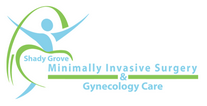Top Tips For Managing PMS
As women grow older, their menstrual cycle changes as our bodies develop. For 85% of women in their early 20s to their mid-30s, they will begin to develop premenstrual syndrome (PMS) during the luteal or the second phase of their menstrual cycle.
What are some signs for PMS?
PMS can induce many unexplained symptoms you may or may not have experienced multiple times in your life including:
- Depression
- Anxiety
- Confusion
- Irritability
- Abdominal Bloating
- Tender or Swollen Breasts
- Weight Gain
- Joint or Muscular Pain
- Social Withdrawal
When PMS isn’t treated or goes undetected, it can evolve into a more severe condition known as premenstrual dysphoric disorder (PMDD) and it can add risk leading to:
- Substance abuse
- Personality disorders
- Obesity
- Smoking
- Loss of appetite and sleep
If you are someone struggling with PMS or PMDD, here are the best tips to help manage your condition and help you improve your life with it.
Changing Your Diet
Certain foods in your diet can trigger some of the symptoms of PMS. You can improve your diet by switching out the foods you usually eat with foods that have the nutrients that will improve your health.
In your PMS diet, you want foods that are able to provide iron, vitamin B, vitamin D, calcium, healthy fats, and less salt. Here are some of the foods we suggest you should either switch out for or add in.
- Nuts contain omega-3 fatty acids that can relieve stress levels. It’s also a great alternative for vegans to get their daily source of fiber and protein.
- Whole-grain foods can decrease your estrogen and progesterone productivity to lower vaginal cramps.
- Oily fish such as salmon and natural oil tablets carry healthy oils and can provide vitamin D while reducing most of your PMS symptoms.
- Low-fat dairy products with high amounts of calcium to help reduce mood swings.
- Limit yourself or quit caffeine. Cutting coffee and energy drinks lowers sleep disturbance.
If you are vegan or vegetarian, ask your doctor about PMS diet alternatives.
An Exercise Routine
Exercise is a great way to help manage your PMS stress. Doing moderate exercises such as for about 150 minutes per week or 75 minutes of intense aerobic exercises per week helps regulate your blood stream, it helps reduce bloating and fights fatigue.
If your PMS history involves lots of anger and irritation, you can sign up for these martial-arts classes or an anger management program to help lower aggressive energy levels.
- Boxing
- Mixed Martial Arts Club
- Kickboxing
- Karate
- Tae-kwon-do
- Kendo/Fencing
Get into A New Activity
PMS and PMDD can slowly reduce your interest in the activities you used to enjoy doing each day. If you want to add something active, trying out a new sport can help increase your focus and lowers your stress levels. Or if you are a productive person, adding a new artistic hobby can help increase your creativity and problem solving skills. Here are some activities you can try:
- Chess can increase your strategy making while it helps you focus and teaches you how to predict opponents’ movements.
- Mountain hiking is considered a moderate exercise which helps circulate your blood flow while gaining some fresh air outside and being able to catch vitamin D from the sun.
- Painting helps with stress relief and increases your imagination.
- Kayaking in a two-person canoe can improve your communication and coordination skills while keeping your abdomen in shape.
What Happens if Nothing Natural Works?
If diet and exercise does not improve your PMS management, your doctor may prescribe you to medications that contain fluoxetine to lower its symptoms. The most common medication that contains fluoxetine is prozac. Your doctor may also prescribe medications that can pause your hormones temporarily in order for your fallopian tubes to not release eggs and not allow periods to flow for a long time.
If neither of these medications work, a hysterectomy is the last resort. This is a surgical procedure involving removal of the woman’s uterus, ovaries and fallopian tubes. There are many risks to the procedure that we have covered here in our previous blog you may want to read about before asking about the option to your doctor.
Premenstrual syndrome and premenstrual dysphoric disorder are both conditions that can go undetected or may be mistaken as another mental disorder for women. Whether you are a teenager, a middle-aged woman or a elderly woman, it’s important to ask your doctor about the possibility of PMS or PMDD from the symptoms you or a family member may have.
At Shady Grove Gyn Care, Dr. Dadger specializes in pediatric and adolescent gynecology. We help our adolescents and adults to find signs for development disorders including PMS and PMDD, and search for any menstrual development problems you or your child may be experiencing.
We offer younger women to be educated in sexual health to ask questions and learn about their periods, sexually-transmitted diseases and when their bodies are ready for reproduction and sexual activity. If you would love to know more about your menstrual health or like to make an appointment with Dr. Dadger, contact Shady Grove Gyn Care today.

